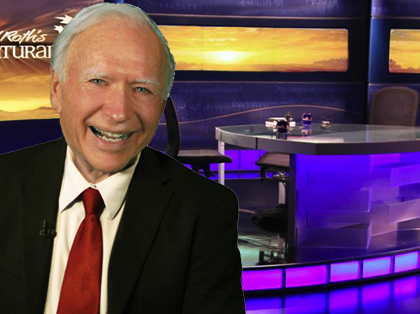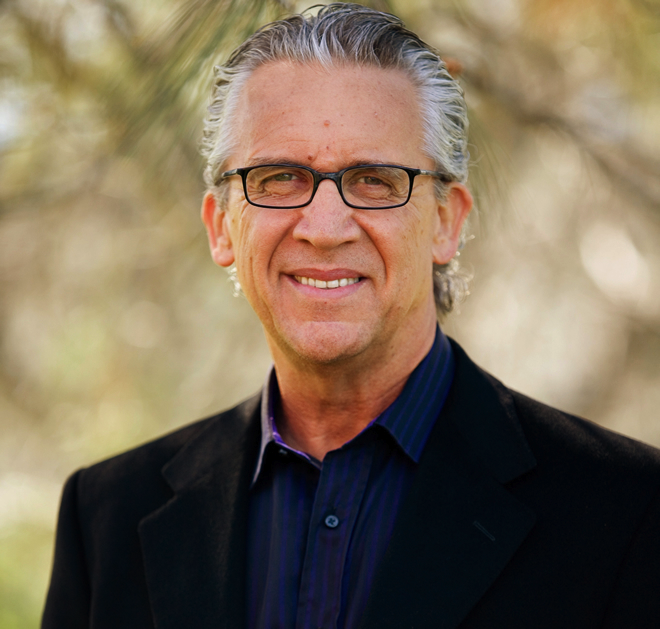Our Guest Bill Morford
Sid: My guest by way of telephone at his home in Lexington, South Carolina is William Morford he’s the translator what is rapidly becoming my favorite reading New Testament, it’s called “The Power New Testament” subtitle “Revealing Jewish Roots.” Because there are Hebrew Idioms to what Jesus was saying. And then the way Bill you brought out the tenses as I read and it’s in modern English, the whole thing becomes maybe you should call it “The Alive New Testament.”
Bill: (Laughing)
Sid: Rather than “The Power New Testament.” Why is it that the other Bibles don’t capture this?
Bill: I certainly don’t understand it because when you take Greek this is the way you’re told that it should be translated. But when the others translate it they leave out the extra punch that’s there in the Greek.
Sid: How did you first get attracted? I know how you got attracted to the Greek, but how did you even. I mean the average Christian doesn’t know these idioms, these Hebrewisms. How did you understand this, how did you learn this?
Bill: I went to a Rabbi… we moved to Lakeland, Florida just before I started before the Lord told me to get serious in translating. And we moved there just to… because we felt that that’s where the Lord wanted us. We didn’t know anyone in Lakeland, but we felt that He put me in touch with a Messianic Rabbi so I could get Hebrew references that I needed. After we got to Lakeland we found out that there was no Messianic Rabbi there, but there was Rabbi Eliezer Ben-Yehuda a Jewish Rabbi who was a great help. Personally going through scripture with me and giving me reference books.
Sid: And for those that are tuning in for the first time this particular Rabbi’s grandfather was the single person that pioneered Hebrew to be a modern speaking language in Israel. And actually came up with many of the words so you could not have found a better teacher Bill.
Bill: Right, certainly not and what made him even better than his scholarship was his attitude and his helpfulness. And he feels that part of his call is to be a bridge between Christians and Jews. So he was very helpful. We’ve became very good friends. And we’ve been to their home for Pesach, or Passover, and for other feasts days it’s really wonderful.
Sid: Bill, I want you to teach some of the things that I’ve been gleaning from reading your “Power New Testament.”
Bill: Okay, let’s start at Acts 18 with the first verse that says “Paul going to Corinth after these things he left from Athens and went to Corinth and when he found a certain Jewish man name Aquila a native of Pontus who came recently from who came recently from Italy with Priscilla his wife, because of the order of Claudius to separate all the Jewish people from Rome, Paul came to them and because they were in the same trade he was staying with them and he was working. For they all were prayer shawl makers by trade. And he was discussing in the synagogue…
Sid: Wait a second, my Bible says “Tentmakers.”
Bill: Well, they say that but that’s not right. The word that’s translated tentmaker is “skenopoios” and it does not appear in any other Greek writing anywhere. So whether it was commonly used by the Jewish people in those days or not whether Luke just made it up we don’t know. But we do know that a man named Bauer who did the Bauer-Arndt-Gingrich Greek-English Lexicon this is over a hundred years ago. He wrote a whole column on that one word and concluded that he didn’t know what it was, but that it was something that required technical training. The technical training that we know all three had was rabbinic training. And that was required to make prayer shawl.
Sid: So you believe that Paul’s tent making, so to speak, was making tallits, prayer shawls.
Bill: Absolutely.
Sid: By the way you have some fascinating information about the prayer shawl. For instance when the woman with the issue of blood reached out to touch the garment of Jesus, you don’t call it a garment do you. What do you call it?
Bill: That’s the prayer shawl.
Sid: And why was that so important and you explain this in your footnotes. “When she reached out to touch the fringes of the prayer shawl.
Bill: Well the fringe, the tseetseet is the Hebrew word. The reason it was made is given in the 15 chapter of Numbers and it was made that all could look upon it and remember all the commandments and promises of God. So that when she touched that she knew that on a holy man of God that that fringe represented all the commandments and all the promises for her, and those promises included her healing. For the Lord said “I am the Lord your healer.” Way back in the wilderness he said that.
Sid: Now I just have a vision of someone putting the prayer shawl on that’s in dire need of being healed. And when they grab hold of the fringes and I know that this is just a point of contact but there’s something so supernatural about the prayer shawl that when you grab hold of the fringes of the prayer shawl you’re grabbing hold of every promise in God’s word having to do with healing. That’s exactly what that woman with that issue of blood did.
Bill: Absolutely, no question about it.
Sid: Okay, if you would teach further.
Bill: Well there’s a another meaning to it; of course well, before I get to the next meaning, I want to say on the fringe the Greek work is consistent in using… in referring to the fringe. It’s Kraspedon and it just means fringe, it never meant hem or anything like it.
Sid: Well, where did we get hem from; rather than fringe?
Bill: Who knows you’ll have to wait until you get to heaven and ask those that…
Sid: They did not… you know what it was the translators were great Greek scholars but they didn’t know their Jewish roots. And let’s face it the New Testament was written for Jews in a Jewish nation by Jews. I mean what do you expect give me a break you know.
Bill: (Laughing) Exactly. You’re right you know. And the other thing that I was going to get to in a different meaning that has been confirmed by using the Septuagint. And that’s in 1st Corinthians 11 getting down I want to read that whole paragraph. But I’ll start with verse 14 “Does not nature teach you this that the man on the one hand has long hair it’s a disgrace to him.” And of course that was the custom in the Roman Empire in the lst Century that men wore very short hair. But on the other hand for a woman it is her glory. Because the hair was given to her as an ornament in place of a prayer shawl. And the word translated prayer shawl there is the same word that’s used in the Septuagint for prayer shawl in Deuteronomy 22:12.
Sid: So you mean these woman that cut their hair to the point where you can barely see they have any hair today they’re not reflecting the prayer shawl.
Bill: (Laughing)
Sid: (Laughing) Is that what the word is saying?
Bill: Yes.
Sid: I’m going to get into trouble. I better watch out.
Bill: Exactly right well, woman wear prayer shawls today. And it’s a question of hair custom in the first century on that. And I know that in conservative synagogues woman use prayer shawls.
Sid: And by the way I get questions all the time from woman that says “Is it acceptable for me to put on a prayer shawl and pray?” And the answer is “You are free.”
Bill: (Laughing)
Sid: You are a free person and if that’s going to enhance your worship of God and your prayer and your communion with God go for it.
Bill: See the command is to put it on the corners of a square or a rectangular garment. And the prayer shawl in the wilderness was their outer garment. And the 1st Century Israel it was their outer garment that they still had and is more like a poncho with a whole cut in the middle. In fact, the description of Jesus garment in John 19 that the soldiers cast lots for that fits the garment that was worn in the wilderness. The poncho like garment and the fringes were placed on the corners. And in fact a recent issue of Biblical Archeology Review had pictures taken in Jerusalem in the mid nineteenth century and there was several people in those pictures who were wearing garments that were not quite like the poncho but were very similar. And there’s no question that that’s what it was. And Rabbi Ben-Yehuda told me that a number of those garments dating back to roughly the 1st century have been uncovered by modern archeology. But again we are free. There is nothing in the commandment to put the fringes on the garment that says “Only men could wear those garments.” It was just put the fringes on the garment and that garment described what the men were wearing at that time.
Sid: Bill just out of curiosity because you bring out these idioms that there is no way of understanding the Jewish roots of the faith. By you call it “The Power New Testament” because you bring out the tenses. It becomes so alive. I mean I am so excited about this translation. What feedback are you getting not from someone like me that comes from a Jewish background but someone that’s never been taught these things when they read your “Power New Testament” for the first time, what do they say to you?
Bill: We have a stack of letters people just saying how much it’s opened things up for them. I got a letter from a pastor in Michigan just recently just said “Wow!”
Sid: We’re out of time right now Bill.
Tags: its supernatural, Sid Roth



